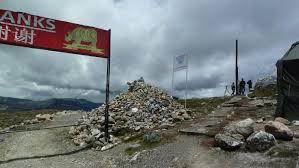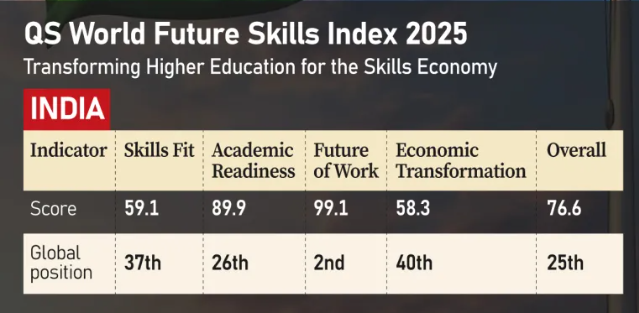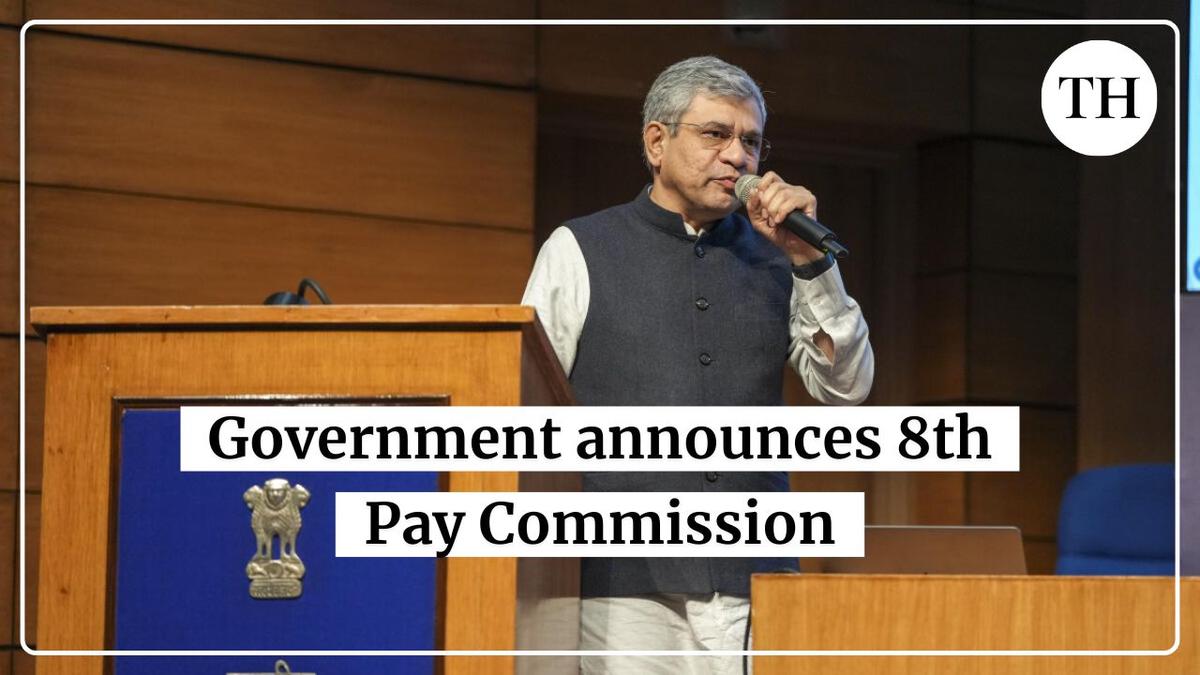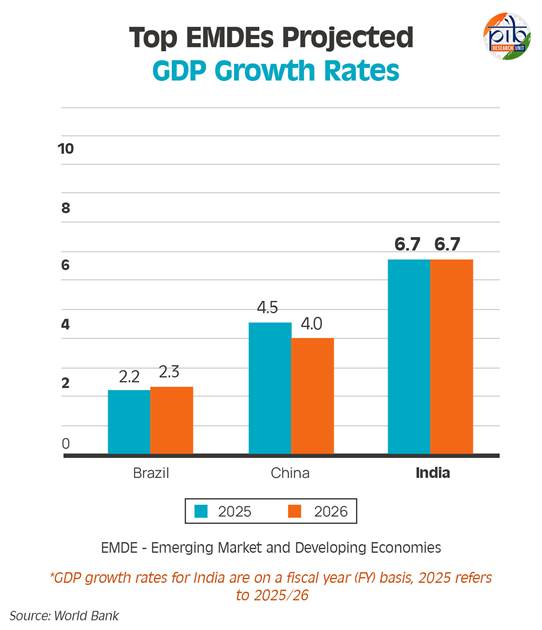Bharat Ranbhoomi Darshan

- 17 Jan 2025
In News:
The Bharat Ranbhoomi Darshan initiative, launched by Defence Minister coinciding with the 77th Army Day celebrations, is a collaborative effort between the Ministry of Defence and the Ministry of Tourism.
Key Highlights:
- This initiative is designed to promote battlefield and border tourism by providing citizens with access to historically significant battlefields and military sites.
Objectives
- Promote Battlefield and Border Tourism: Encourage citizens and tourists to explore India's military history.
- Enhance Awareness: Educate visitors about India’s historic battles and military valor.
- Socio-Economic Development: Boost infrastructure, connectivity, and local economies in border regions.
Features of Bharat Ranbhoomi Darshan
- Virtual Tours and Interactive Content: The platform offers historical narratives, virtual tours, and interactive multimedia to provide a detailed account of each battlefield.
- Travel Planning Assistance: Visitors can access information regarding permits, travel routes, and accommodations.
- Integration with the Incredible India Campaign: The initiative is part of the government’s broader tourism strategy, ensuring widespread promotion.
- Collaborative Infrastructure Development: The Indian Army is working with local civil authorities to facilitate safe tourism without compromising operational preparedness.
Key Locations Covered
- Galwan Valley (Ladakh): Site of the 2020 India-China clash.
- Doklam: A tri-junction between India, Bhutan, and China.
- Line of Control (LoC) and Line of Actual Control (LAC) Sites:
- Nathu La Pass (Sikkim): Significant in the 1967 Indo-China clashes.
- Longewala (Rajasthan): Site of a key battle during the 1971 Indo-Pak war.
- Other Sites: Locations of the 1962 war with China and various Indo-Pak conflicts.
Significance
- Historical and Patriotic Engagement: Provides citizens firsthand insights into the challenges faced by soldiers in remote, strategic locations.
- Tourism Development in Border Areas: Previously restricted areas now open for visitors, leading to economic benefits for local communities.
- National Security Awareness: Encourages greater appreciation of India's defense forces and their contributions.
Implementation
The first phase of the Bharat Ranbhoomi Darshan project includes key battlefields and border sites across seven major regions. Future phases will expand coverage to additional historical military locations.
Fast Track Immigration FTI-TTP

- 17 Jan 2025
In News:
The Government of India is launching the Fast Track Immigration Trusted Traveller Program (FTI-TTP) to streamline immigration at seven major airports.
Key Highlights:
- The initiative, inaugurated by Union Home Minister Amit Shah, aims to enhance the travel experience for Indian nationals and Overseas Citizen of India (OCI) cardholders.
- This comes seven months after the programme was first introduced at Indira Gandhi International (IGI) Airport, New Delhi. The airports included in this initial phase are: Mumbai, Chennai, Kolkata, Bengaluru, Hyderabad, Cochin and Ahmedabad
Objectives of FTI-TTP
- Provide seamless and secure immigration services.
- Reduce human intervention using automated e-gates.
- Align with the Viksit Bharat@2047 vision for modern infrastructure.
How the Programme Works
The FTI-TTP simplifies immigration with automated e-gates. Travellers must complete a one-time online registration to enroll. The process involves:
- Online Registration: Submit personal details and upload necessary documents via the official portal (https://ftittp.mha.gov.in).
- Biometric Submission: Fingerprints and facial images must be submitted at an airport or Foreigners Regional Registration Office (FRRO).
- Immigration Clearance via E-Gates:
- Passengers scan their boarding passes and passports at e-gates.
- Biometrics are automatically verified.
- Upon authentication, the e-gate opens, granting clearance.
Validity: Registration is valid for five years or until the registered passport expires, whichever comes first.
Who is Eligible?
The first phase of the FTI-TTP is open to:
- Indian nationals.
- OCI cardholders aged between 12 and 70 years.
- Children aged 12-18 can register using their parents’ email/phone number.
- ECR (Emigration Check Required) passport holders are not eligible.
Documents Required for Registration
- Passport-sized photograph (as per Indian passport specifications).
- Scanned copy of passport (front and back pages).
- Proof of current address.
- OCI card details (if applicable).
Key Points to Note
- Registration may take up to a month due to verification by field agencies.
- Applications with incorrect or outdated information may be rejected.
- In case of passport loss or expiry, travellers must reapply and submit fresh biometrics.
- Passports must have at least six months’ validity at the time of applying.
- For support, travellers can reach out via email at india.ftittp-boi@mha.gov.in.
Implementation Phases
The FTI-TTP will be implemented in two phases:
- Phase 1: Covers Indian citizens and OCI cardholders.
- Phase 2: Will extend to foreign travellers.
- The programme will be expanded to 21 major airports across the country.
Comparison with Similar Global Programmes
Several countries have implemented similar fast-track immigration systems:
United States: Global Entry
- Introduced in 2008.
- Offers self-service kiosks for pre-approved travellers.
- Requires background checks and in-person interviews.
United Kingdom: Registered Traveller Service
- Launched in 2015.
- Allows frequent visitors from select countries, including India, to use e-gates.
- Requires visa eligibility or multiple prior visits.
European Union: Smart Borders Initiative
- Implemented in 2016, with full deployment expected by 2024.
- Pre-registers biometric data for faster processing at Schengen Area borders.
Australia: SmartGate
- Started in 2007 for Australian and New Zealand passport holders.
- Uses automated kiosks for identity verification via passport scans and photos.
Saudi Arabia: Smart Travel System
- Launched in 2019.
- Uses automated e-gates for faster immigration clearance.
- Expanding as part of Vision 2030 to improve travel experience, particularly for Hajj pilgrims.
QS World Future Skills Index 2025

- 17 Jan 2025
In News:
The QS World Future Skills Index 2025, released by Quacquarelli Symonds (QS), evaluates countries' readiness to meet the evolving demands of the global job market. It assesses nations based on skill development, education, and economic transformation, highlighting their preparedness for emerging technologies, artificial intelligence (AI), and sustainability.
India’s Performance in the Index:
- Overall Ranking: India is ranked 25th globally, categorizing it as a “Future Skills Contender.”
- Future of Work Category: India ranked 2nd, only behind the United States, reflecting its preparedness for AI, digital, and green jobs.
- Economic Transformation: India scored 58.3, the lowest among the top 30 countries, reflecting challenges in innovation and sustainability.
- Skills Fit: India received a score of 59.1, the weakest among the top 30 nations, indicating a gap between workforce skills and industry requirements.
- Academic Readiness: India’s education system is struggling to keep pace with employer demands, necessitating curriculum reforms and stronger academia-industry collaboration.
Key Findings from the Report:
Strengths:
- Digital Readiness: India has demonstrated strong capabilities in integrating digital talent into the workforce.
- Youth Advantage: A large, young population provides a demographic dividend for sustained economic growth.
- Startup Ecosystem: India’s startup culture and government initiatives support technological advancement and innovation.
Weaknesses:
- Higher Education-Industry Gap: Mismatch between education and employer requirements, particularly in AI, green skills, and entrepreneurship.
- Limited R&D Investment: India’s research and development spending is 0.6% of GDP, far below the global average of 2.7%.
- Low Innovation in Sustainability: India scored 15.6 out of 100, ranking poorly in future-oriented innovation for sustainability.
Challenges and Concerns:
- Skilled Workforce Shortage: The National Skill Development Corporation (NSDC) estimates a 29 million skilled workforce gap in critical sectors such as healthcare, semiconductor manufacturing, and AI.
- Low Employability Rates: Only 25% of management professionals, 20% of engineers, and 10% of graduates meet global employability standards.
- Higher Education Accessibility: Many students face difficulties in accessing quality tertiary education, particularly in skill-intensive fields.
Opportunities for Growth:
- Leverage Demographic Dividend: India can capitalize on its young workforce to dominate skill-based industries while other nations struggle with aging populations.
- Policy Support:
- National Education Policy (NEP) 2020: Focuses on modular education and reskilling initiatives.
- ULLAS Program: Aims to expand lifelong learning and skill development.
- Technological Integration: Advancements in AI and digital learning can help modernize academic curricula and improve job readiness.
Recommendations for Improvement:
- Enhancing Academia-Industry Collaboration: Universities should prioritize problem-solving, entrepreneurship, and creativity to align education with employer needs.
- Increasing R&D Investment: Raising spending on research and development to promote innovation and sustainability.
- Expanding Access to Education: Bridging regional disparities in tertiary education through flexible and modular learning.
- Strengthening Policy Implementation: Ensuring effective execution of skilling programs to reduce the workforce-employability gap.
Eighth Pay Commission

- 17 Jan 2025
In News:
The Union government has approved the constitution of the Eighth Pay Commission, benefiting 50 lakh central government employees and 65 lakh pensioners, including serving and retired defence personnel. The decision, taken ahead of the Delhi Assembly elections, aims to address long-standing demands from trade unions and employee organizations.
Key Features of the 8th Pay Commission
- Early Constitution: Although the Seventh Pay Commission's term ends in 2026, the early establishment of the Eighth Pay Commission ensures timely recommendations and implementation.
- Composition: The commission will have a Chairperson and two members, typically led by a retired Supreme Court judge.
- Terms of Reference (ToR):
- Revision of Pay: Recommend updates to salary structures and allowances.
- Addressing Pay Disparities: Resolve wage differences across various cadres.
- Market Parity: Align pay structures with industry standards.
- Pension and Retirement Benefits: Improve pension schemes and adjust them for inflation.
- Economic Impact Analysis: Assess how salary hikes contribute to economic growth.
- Stakeholder Consultations: Engage with governments and other stakeholders before finalizing recommendations.
Economic Implications of the 8th Pay Commission
- Employee Well-being: Higher wages will enhance the quality of life for government employees.
- Boost to Consumption: Increased salaries are expected to stimulate demand and support economic expansion.
- Ripple Effect on PSUs & States: Many public sector undertakings and state governments follow the central pay commission’s recommendations, potentially leading to wider economic benefits.
- Fiscal Considerations: The implementation of the Seventh Pay Commission in 2016-17 led to an expenditure increase of ?1 lakh crore. A similar rise in 2026-27 could impact fiscal space for capital expenditures.
Challenges and Concerns
- Implementation Delays: Past commissions have taken two years to submit recommendations, which could push implementation beyond 2027.
- Living Wage & Pension Issues: Existing formulas for minimum wage and pension calculations may need revision to reflect rising healthcare, education, and digital access costs.
- Financial Burden on the Exchequer: A significant increase in revenue expenditure could limit the government’s ability to invest in infrastructure and development projects.
Global Economic Prospects (GEP) Report 2025

- 17 Jan 2025
In News:
The World Bank has released its Global Economic Prospects (GEP) report for 2025, a flagship biannual publication analyzing trends and projections in the global economy, with a focus on emerging markets and developing economies (EMDEs). The report highlights economic growth forecasts, trade dynamics, and the challenges and opportunities shaping the global economic landscape.
Global Economic Outlook
- The world economy is projected to expand at a steady yet subdued rate of 2.7% in both 2025 and 2026, maintaining the pace of 2024.
- Inflation, which peaked above 8% in recent years, is expected to stabilize at an average rate of 2.7% in 2025 and 2026, aligning with central bank targets.
- Despite growth, the global economy remains 0.4 percentage points below the 2010-2019 average, raising concerns about its ability to tackle poverty effectively.
Challenges and Risks
- Trade Restrictions: New trade restrictions imposed in 2024 were five times higher than the 2010-19 average, contributing to a slowdown in global trade and economic growth.
- Rising Protectionism: Increased fragmentation in global trade policies is limiting exports and hampering economic integration.
- Policy Uncertainty: Adverse policy shifts, sluggish progress in reducing inflation, and weaker performance in major economies pose downside risks to global recovery.
- Debt and Investment Concerns: Developing economies are experiencing sluggish investment growth and high debt levels, exacerbated by climate change-related costs.
Emerging Markets and Developing Economies (EMDEs)
- EMDEs have significantly evolved since 2000, now contributing about 45% of global GDP, compared to 25% at the start of the century.
- The three largest EMDEs—India, China, and Brazil—have accounted for approximately 60% of annual global growth over the past two decades.
- Growth in low- and middle-income developing countries is expected at 4.1% in 2025 and 4% in 2026, with a notable slowdown compared to the early 2000s.
- Low-income countries are projected to rebound to 5.7% in 2025 and 5.9% in 2026, aided by easing conflicts in some regions.
- The world's poorest nations, with annual per capita incomes below USD 1,145, recorded growth of 3.6% in 2024, impacted by conflicts in regions like Gaza and Sudan, alongside lingering effects of COVID-19 and geopolitical tensions.
India-Specific Highlights
- Fastest-Growing Major Economy: India is expected to maintain its position as the world’s fastest-growing major economy, with a projected growth rate of 6.7% in both 2025 and 2026.
- Sectoral Growth: The services sector will remain robust, while manufacturing activity is expected to strengthen.
- Investment Growth: Supported by rising private investment, improved corporate balance sheets, and favorable financing conditions, investment growth in India is expected to remain steady.
- Key Growth Drivers:
- Infrastructure development under the PM GatiShakti National Master Plan.
- Innovation-driven initiatives like Startup India and the Production Linked Incentive (PLI) Scheme.
- Expansion of the digital economy and financial inclusion efforts.
- Rural Demand and Consumption: Growth in rural demand and a recovery in farm production have bolstered consumer spending, although urban consumption remains affected by inflation and slow credit growth.
